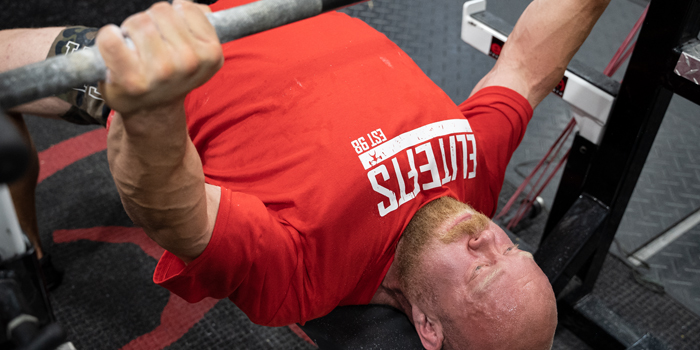
Spend time in the growing world of evidence-based rehabilitation or coaching, and you might hear, “technique has no correlation with injury risk.” Lately, there has been a greater and greater promotion of the idea that our bodies are resilient and can adapt to the demands placed upon them; that we can adapt, get stronger, and build tolerance within what could be considered *bad* technique.
There is truth to that idea. Think of how many lifters you’ve seen that are getting away with trips to snap city on a weekly basis. Are they really getting away with something, or have they adapted to handle the positions they are putting themselves in? If you take the time to build strength within *bad* technique, you can get stronger, you can adapt, and you will be able to handle more.
Why Do Injuries Occur?
Injuries happen when the structural tolerance of a tissue is exceeded. Bend a bone too far and it will break. Pull a tendon too hard and it will snap. If too much force is applied to or within a system something is going to break. What is too much force can vary tissue to tissue, person to person, movement to movement, with the state of fitness vs fatigue, and the ability to control the movement.
RECENT: What is Pain Telling Us?
In evidence-based circles, you’ll hear “load management is the only way to reduce injury risk." Again, there is truth there. Put too much weight on the bar in a single training session, and something might break. Accumulate too much volume over multiple sessions and something might break. Simply put, if you don’t manage your training effectively you are risking injury. If you manage your training well—if you don’t exceed the limit of what your body can handle short or long term—you will be able to drive progress while reducing the chance of something breaking. Stimulus drives adaptation; too much stimulus and adaptation can become maladaptation.
Within that, yes, we can improve tolerance to movement with correctives, but if you exceed the force tolerance of a tissue, there is no corrective or number of correctives that can change that. Load management is king when it comes to injury risk reduction.
Technique as a Load Management Strategy
Understanding external load management is easy. Just pay attention to what you’re putting on the bar and how often you’re doing it. Understanding internal load management, well that’s actually easy too.
Remember when you were benching in high school? The gym teacher probably told you something about how if you used a wider grip you would hit more chest, and if you benched with a narrower grip you would hit more triceps. That is it, that is internal load management. By changing the positions that we are putting ourselves in, by modifying technique, we can alter where the force is distributed within our bodies.
Alter technique, alter the movement, and we alter which tissues force is being applied to. It’s part of why lifters training conjugate can maintain relatively higher intensities year-round compared to lifters training with more specificity. Rotating max effort movements week to week, even slightly, will change where the force is being distributed within the body. Yeah, you still do need to pay attention to absolute load on the bar, but rotating movements can blunt the cumulative effects of handling high percentages on a weekly basis.
Technique as a load management strategy becomes especially valuable if you are a little beat up, in pain, or if you are trying to work around an injury (check out my other article on why pain does not necessarily equate to injury here). Does your knee hurt during squats? If loading the knee is painful you can distribute load away from the knee by modifying your squat. Try widening your stance, try sitting back more, try squatting to a high box. Try all three. You might need to do more than just modifying your squat to get your knee totally out of pain, but modifying your squat can still allow you to train it.
On the other side, if we modify technique without allowing ourselves to adapt to the changes, we can still exceed a tissue's capacity. External load management supersedes internal.
When Can Technique Be Dangerous?
We know that we can adapt to “bad” technique. We know that load management is the only way to reduce injury risk. We know that with technique modification we can alter which tissues are being loaded. So, can technique ever be dangerous?
Dangerous technique is the technique that you haven’t had a chance to adapt to. Dangerous technique is inconsistent technique. Dangerous technique is technique that puts you in positions that you are not prepared to handle. Dangerous technique is one that prioritizes load over execution. Dangerous technique is one that is sloppy.
Benching with your elbows flared isn’t necessarily dangerous but an unexpected flare under a max load could be. Deadlifting with a round back isn’t dangerous on its own, but rounding more than you can tolerate could be. A knee caving on a squat isn’t dangerous, but too much cave out of your control could be.
I like to teach lifters to not fear technique breakdown but to strive for consistency in execution. Part of increasing capacity to maintain technique is riding the edge of technical breakdown. You need to push your ability to hold position so that you can hold position under bigger and bigger weights. The safest technique is the one that you have best adapted to, and consistency will drive that adaptation.
Does Technique Play a Role in Injury Risk?
It can, but technique’s role in injury risk is limited to its influence on load management. By purposefully modifying technique, we can direct load within the body. By avoiding uncontrolled technique breakdown, we can avoid accidentally exceeding a tissue's capacity. Load management is still king when it comes to injury risk reduction, but we need to understand how technique can play a role within it.
Seth Albersworth is a powerlifter with experience in and out of gear. His best totals are 2105 pounds raw and 2408 pounds multi-ply. Seth has completed his bachelor's degree in kinesiology from the University of Calgary and recently graduated from Palmer College of Chiropractic's Florida Campus. He's in the process of acquiring licensure as a Doctor of Chiropractic.











1 Comment